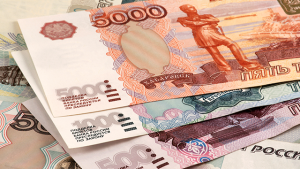Ruble Rallies in Currency Markets
 Driven by a marked rise in the price of Brent crude oil this week, Russia’s ruble has risen to its highest point against the dollar since mid August of this year. Decreasing commodities markets in China, combined with a glut of oil caused by excessive Saudi production, has weakened Russia’s economy, which is largely based on energy exports.
Driven by a marked rise in the price of Brent crude oil this week, Russia’s ruble has risen to its highest point against the dollar since mid August of this year. Decreasing commodities markets in China, combined with a glut of oil caused by excessive Saudi production, has weakened Russia’s economy, which is largely based on energy exports.
On Friday, the ruble dropped to an exchange rate of 61 rubles against the US dollar, a strengthening of 7.6% from the beginning of the week. The ruble has been weak against many other currencies since the devaluation of the Chinese Yuan. The climb was largely facilitated by the rise in the price of Brent crude oil, which reached $54 per barrel on Friday. The price of oil is a major determining factor in the value of the ruble, as roughly half of the nation’s economy is based on its energy sector. Falling oil prices from the Saudi oil glut, contributed to by American firms making use of hydraulic fracturing extraction techniques, have caused the ruble to lose nearly 45% of its value since the beginning of 2014.
Also contributing to the strengthening of the ruble was a weak US jobs report. The report fueled speculation the the Federal Reserve may wait until next year to raise interest rates, which will likely spur continued investing in oil. The rate hike is now expected to occur in March of next year, though this is not certain. Russian officials have stated that the strengthening of the ruble on this basis is a delicate balance, as it is possible that it may become overvalued based on speculation.